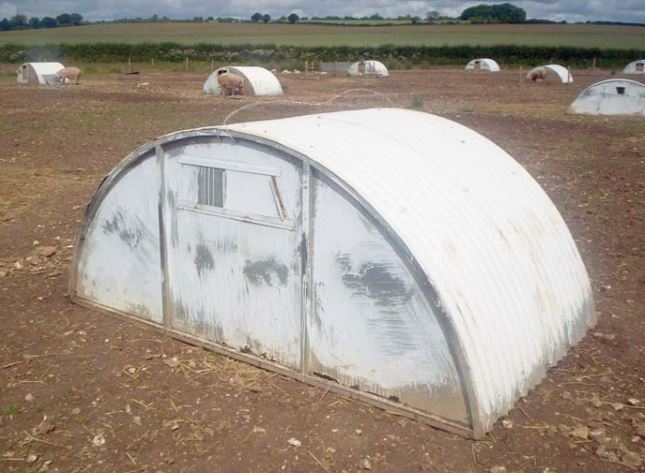Weather, seasons and pig breeding
The weather and the seasons can affect pig production and breeding performance. Use this information to understand why it's important to consider temperatures during the breeding process.
How can heat affect sows?
There is a seasonal effect on production. For outdoor sows in the UK, several days of warm weather (average daily temperature above 18°C) during lactation and around weaning result in reduced and more variable farrowing rates, in comparison to when temperatures are below 18°C.
- Throughout lactation, milk production increases and, because of this, the heat generated by the sow increases; therefore, susceptibility to heat stress is greatest just before weaning
- In warmer temperatures, the sow may reduce her feed intake such that it fails to meet the metabolic demands of lactation
- To meet the ongoing requirements of lactation, the sow will then mobilise her own body reserves, resulting in reduced body condition and possible adverse effects on developing ovarian follicles
- Nutritional deficits are associated with reduced luteinising hormone (LH) production, resulting in delayed returns to oestrus, and reduced conception and farrowing rates
- To cool down, sows redirect their blood flow to their skin and mammary tissues, away from the ovaries. The quality of their eggs and the readiness of their uterus for pregnancy may, therefore, be negatively affected.
Outdoor sows in the UK will benefit from a cooling facility when daily average temperature rises above 18°C.
Does heat affect gilts?
Gilts have been found to be less affected by warmer temperatures, probably because they do not have the increased metabolic demand of lactation prior to service.
Things you can do to minimise the impact of hot weather
Feed
Monitor sow feed intake in warm weather. If sows are not eating, take steps to cool them down or provide more energy-dense feed. Feed sows twice a day if not on an ad-lib system.
Wallows
Provide wallows early in the year as well as throughout summer, or sprinklers for sows to cool down in. In individual paddocks, you could create a spray of water from the sow drinkers, providing an area of mud in which the sow can stand or wallow.
Farrowing arcs
Painting farrowing arcs white will reflect sunlight and reduce the temperature inside by up to 7°C. Using insulated arcs, fully insulated where possible, together with painting white, will give an added temperature-reducing effect. An adjustable ventilation opening at the rear, and realigning arcs to assist with airflow, will also help.

Recording and models
Record-keeping systems are ideal tools for optimising production. Use detailed and accurate records in a system for predicting performance, seasonal or otherwise.
Anticipate sow production in advance using previously recorded data and monitor sow performance during periods of seasonal infertility.
Observe strict culling rules for sows exhibiting increased problems.
Genetics
If freeze-thaw technology for boar semen was perfected, a change in the way semen is collected over the year may be possible, with higher throughput during winter, to compensate for summer reductions in fertility.
Genetic research into seasonality may reveal sow lines, which are more tolerant of changes in environmental conditions and, therefore, less likely to exhibit signs of seasonal infertility.
Research on seasonal infertility
This information highlights key findings from Meteorological effects on seasonal infertility in pigs, a BPEX-funded PhD studentship carried out by the University of Leeds.
The research analysed 122,391 farrowings from 32,935 sows across 29 similarly managed herds. The results showed:
- Seasonal influences on the fertility of outdoor UK sows do exist
- Evidence of seasonal changes in boar semen quality
- The main impact of seasonality on production in sows was reduced farrowing rates
- Temperature, meteorological conditions and photoperiod were key factors
Useful links
Topics:
Sectors:
Tags:

